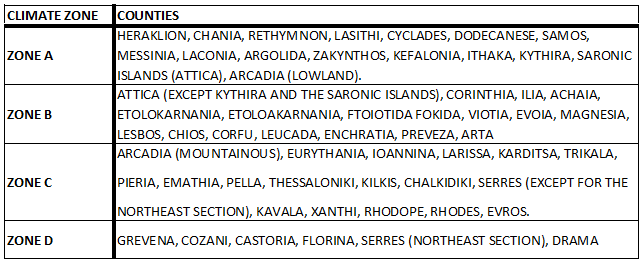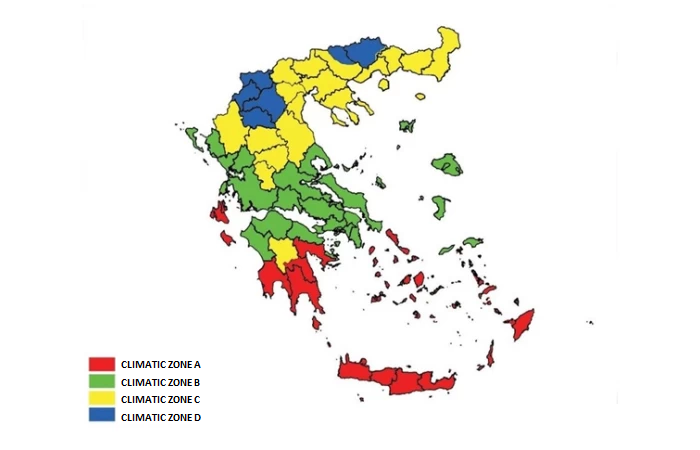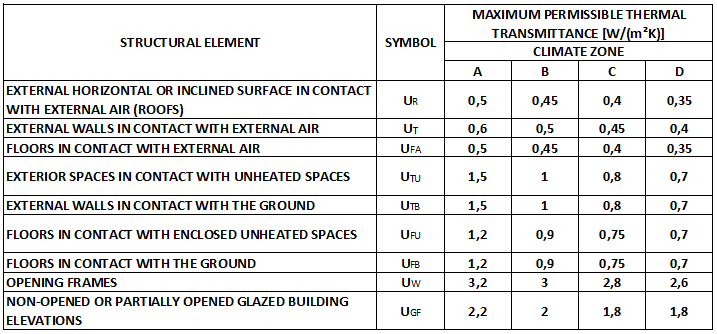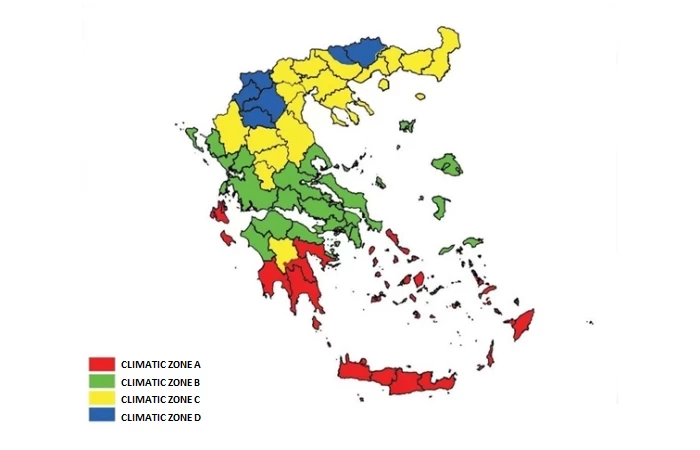CLIMATIC ZONES AND THEIR DIVISION IN GREECE
For all structural elements of a building (opaque and transparent), the current regulation establishes specific limits for the values of the thermal transmittance. Those limits are linked to the position of the cross-section in the structure and the climatic zone of the building.
The location of the cross-section has to do with the type, geometric condition and adjacent points of a building element.
Climate zones refer to the division of the Greek territory based on the temperature conditions prevailing in each prefecture of the country. According to the current energy efficiency regulation for buildings, our country is divided into 4 climate zones, as shown in the table below (from the hottest Zone A to the coldest Zone D).

Important to mention that in each prefecture, areas located at an altitude of more than 500 m must be placed in the next colder climate zone from the one to which they belong. For example, a building located in the prefecture of Attica but at a higher altitude than the limit mentioned above is automatically moved from zone B to zone C.
This specificity clearly excludes mountain areas in zone D, as it is the coldest zone under the Regulation.

The maximum permissible values of the thermal transmittance of various building elements, by climatic zone, are as follows


